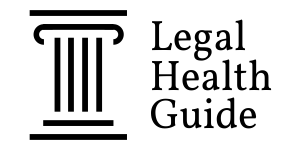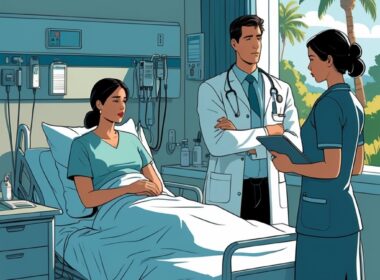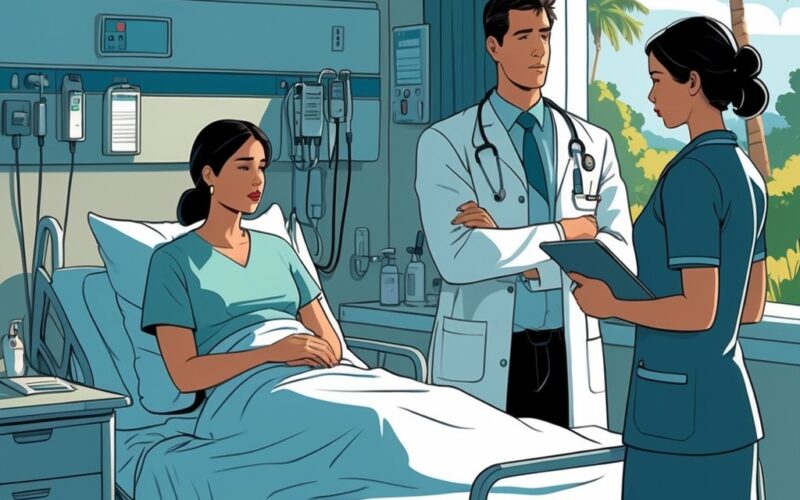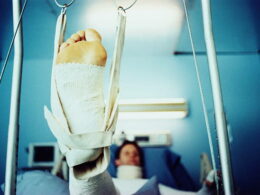When you get medical treatment in Queensland, you expect healthcare providers to give you safe, competent care. But sometimes things just don’t go as planned, and you start to wonder: was this just bad luck, or did someone mess up?
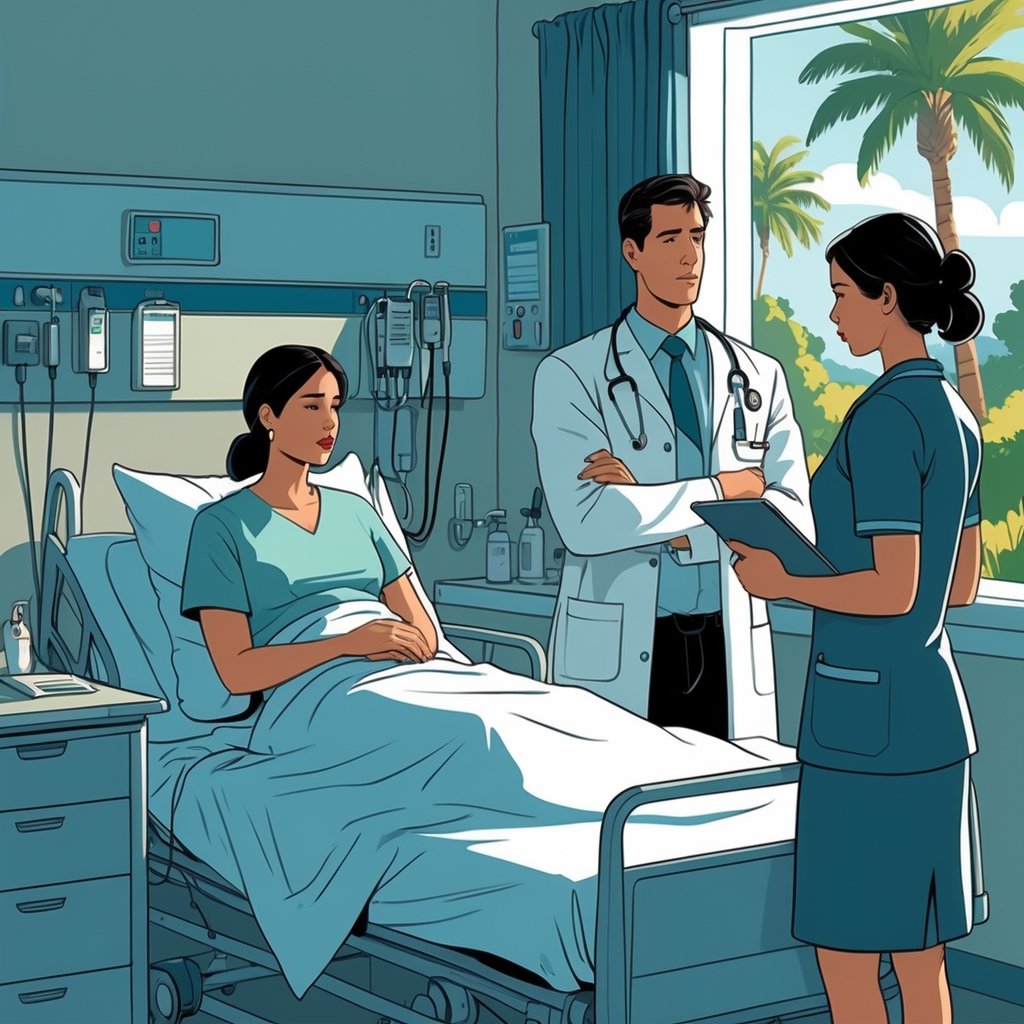
Medical negligence in Queensland happens when a healthcare provider doesn’t meet their duty of care. If they fail to provide reasonable treatment that meets accepted medical standards and you get hurt, that’s negligence. It’s not about being disappointed with your results. Medical negligence requires proving that your healthcare provider actually broke their professional duty, and that this mistake directly caused your injury.
Knowing what counts as medical negligence helps you figure out if you might have a claim. The legal process comes with its own steps and deadlines, so it’s good to know your rights and options if you think you’ve been wronged.
Key Takeaways
- Medical negligence means a healthcare provider didn’t meet reasonable care standards and caused patient harm
- You need to prove both a breach of duty and that this breach directly led to your injury
- Queensland sets strict time limits and asks for expert reports for claims against doctors
Definition of Medical Negligence in Queensland
Medical negligence in Queensland is when a healthcare provider fails to meet their professional duties and harms a patient. The law expects you to prove a breach of duty and that the breach caused the harm.
What Constitutes Medical Negligence
Medical negligence happens when a medical professional fails to take reasonable care and someone gets injured or suffers a loss. This basic idea is at the core of all negligence claims in Queensland.
Key Elements:
- Breach of the standard of care
- Actual injury or harm
- Direct link between the breach and the injury
Medical negligence, or medical malpractice, is when a healthcare provider doesn’t meet their duty of care and a patient ends up hurt.
Not every bad medical result means someone was negligent. Sometimes treatment fails or complications just happen, even when the care was fine.
Standard of Care in Queensland
Standard of care means the level of skill and competence healthcare providers should have when treating you. Queensland law expects medical professionals to keep up with accepted standards in their field.
Measured against:
- What other reasonable practitioners would do in the same situation
- Current medical knowledge and practices
- The provider’s own qualifications and expertise
Health professionals must take reasonable care for patient safety. This expectation covers everything from diagnosis to follow-up.
The Civil Liability Act 2003 shapes how courts look at whether a professional met the standard. This law helps decide if the care was reasonable in the circumstances.
Duty of Care Explained
“Duty of care” is key for figuring out if a bad medical outcome counts as negligence. In Queensland, doctors must meet accepted standards of knowledge and skill.
Duty of care covers:
- Proper diagnosis and assessment
- Sound treatment decisions
- Honest risk communication
- Good follow-up care
You have to show that your injury happened because the professional broke their duty of care.
Your healthcare provider takes on this duty as soon as they agree to treat you. The duty continues until they transfer or finish your care properly.
Common Examples of Medical Negligence
Medical negligence can show up in lots of ways during treatment. The most serious cases often involve misdiagnosis or delayed diagnosis, surgical mistakes, medication errors, or not getting your consent before a procedure.
Misdiagnosis and Delayed Diagnosis
Misdiagnosis is when your doctor gets your condition wrong. This is one of the most common types of medical negligence in Queensland.
Examples:
- Cancer called a minor illness
- Heart attack mistaken for heartburn
- Stroke symptoms waved off as stress
- Broken bones missed on X-rays
Delayed diagnosis means your doctor takes too long to figure out what’s wrong. Even if they get it right later, the wait can cause real harm.
Causes of delay:
- Not ordering the right tests
- Ignoring your symptoms
- Skipping specialist referrals
- Missing obvious warning signs
Delays can make your condition much worse. Cancer patients especially can suffer from late diagnoses.
Surgical Errors
Surgical mistakes during operations can be devastating. These errors sometimes cause permanent disability or even death.
Major surgical errors:
- Operating on the wrong body part
- Leaving tools inside you
- Damaging organs nearby
- Using dirty instruments
Before surgery:
- Wrong patient wheeled in
- Incorrect site marked
- Allergies not checked
After surgery:
- Poor wound care that leads to infection
- Not monitoring recovery closely
- Missing signs of complications
These mistakes often mean more surgeries and longer recovery. The extra medical bills can pile up fast.
Medication Mistakes
Medication errors include giving the wrong drug or wrong instructions. These slip-ups can make you sicker or trigger bad reactions.
Prescription errors:
- Wrong medication
- Bad dosage
- Dangerous drug combos
- Ignoring your allergies
Pharmacy mistakes:
- Giving you someone else’s meds
- Wrong strength or form
- Bad instructions on the label
- Expired drugs
Doctors should check how your meds might interact. Skipping this step can seriously harm your health.
Nurses sometimes give the wrong drug or dose in hospitals, especially with IV lines.
Failure to Inform or Obtain Consent
Before any treatment, you have to be told about the risks and your other options. Your doctor needs your consent before they do anything.
You should be told about:
- All the risks
- Other treatments
- What happens if you say no
- Success rates and possible problems
Consent problems pop up when:
- Doctors rush your decision
- They hide important risks
- Other options aren’t explained
- You don’t get time for questions
This matters most for big surgeries or experimental stuff. You deserve to make informed choices.
Even in emergencies, doctors should try to get your okay if possible. The only real exception is if you’re unconscious and need help right away.
Legal Process for Medical Negligence Claims

The legal process for medical negligence in Queensland is strict and full of deadlines. You have to prove a breach of duty caused your injury, follow notice rules, and get expert medical evidence before things can move forward.
Proving Breach of Duty and Causation
You need to prove two big things in your case. First, show that your healthcare provider broke their duty of care and didn’t meet proper standards.
Second, prove this breach directly caused your injury or made things worse. The law only lets you claim for injuries that wouldn’t have happened if you’d received proper care.
You can’t claim for your original condition, only for extra harm caused by negligence.
What you need to prove:
- The provider owed you a duty of care
- They broke that duty
- The breach caused your injury
- You suffered real damages
Time Limits and Notice of Claim
Queensland law sets tough deadlines for these claims under the Personal Injuries Proceedings Act 2002. Adults have three years from the date of treatment to start court action.
It’s best to give notice within nine months of the treatment. For claims against doctors, follow section 9A of the Act.
Time limits:
- Adults: 3 years to file, 9 months for notice
- Children: 3 years from their 18th birthday
- Children with legal consultation: 18 months after a parent or guardian talks to a lawyer
Your first notice needs to ask for all your medical records from the provider.
Role of Medical Experts
Medical experts are essential in your claim. You can’t move forward without an expert’s report saying the doctor didn’t meet proper standards and this mistake caused your injury.
The expert must be qualified and independent. Their report must clearly say two things: there was a failure to meet proper standards, and that failure caused your harm.
You get 12 months after receiving your records to provide this report and your Part 1 Notice of Claim. Without expert evidence, your claim stops there.
Heads up: If your treatment was from a nurse or allied health professional, not a doctor, you don’t need an expert report under section 9A.
Compensation and Damages
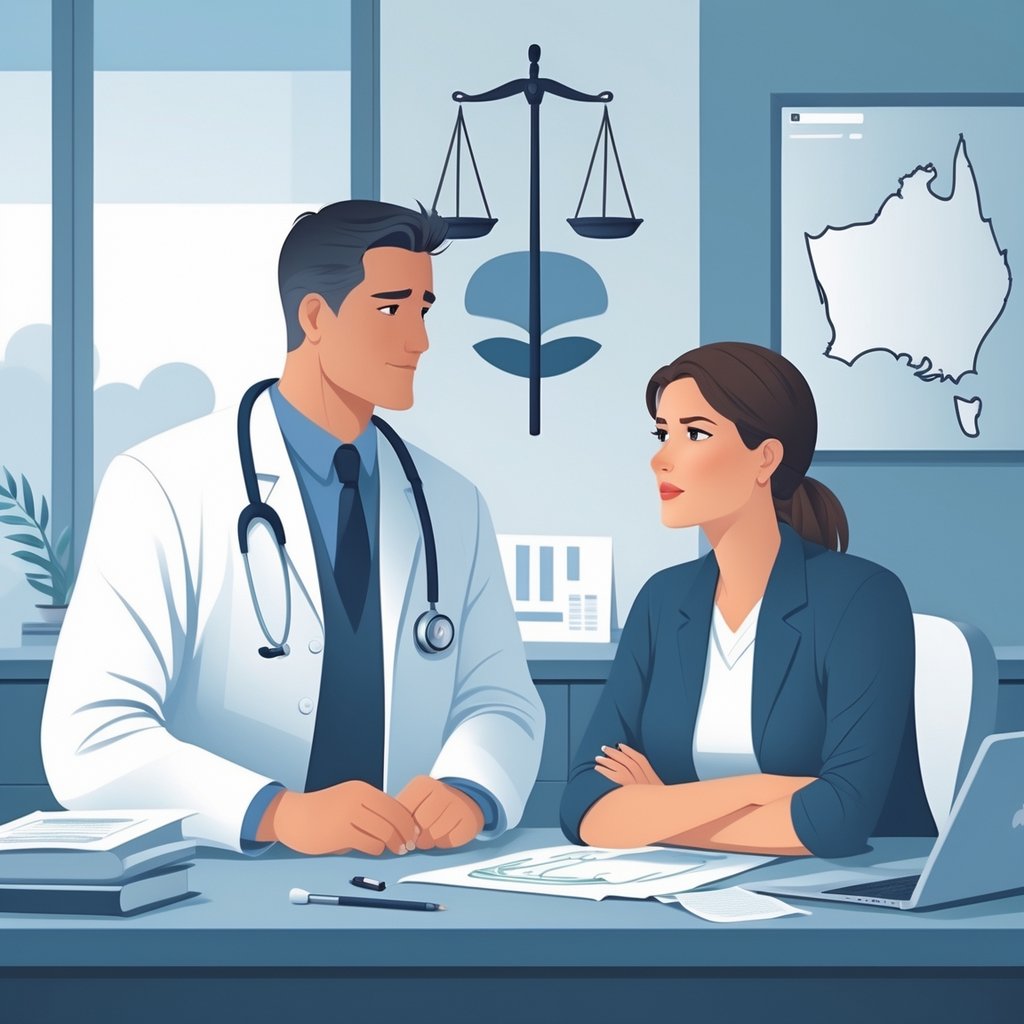
If you win a medical negligence claim in Queensland, you can receive money for three main areas. These include pain and suffering and loss of enjoyment of life, medical costs, and lost income.
Pain and Suffering
You can claim money for physical pain and mental distress caused by medical negligence. This covers how the injury affects your daily life and happiness.
The court looks at how severe your injury is. They also check how long your pain will last.
More serious injuries that cause ongoing problems get higher payments. Your age matters when calculating this compensation.
Younger people often receive more money because they must live with the injury longer. The law limits how much you can get for pain and suffering.
The Civil Liability Act 2003 provides restrictions on certain loss and damage you can claim in personal injury cases. You need medical reports to prove your pain levels.
These reports help show how the negligence changed your quality of life.
Medical Expenses and Future Costs
You can claim money back for medical bills caused by the negligence. This includes hospital stays and rehabilitation costs.
Past medical expenses you can claim include:
- Hospital bills
- Doctor visits
- Medicine costs
- Physical therapy
- Medical equipment
Future medical costs cover ongoing treatment you will need. The court uses medical expert reports to estimate these costs.
Keep all receipts and medical records. These prove what you paid and what treatment you received.
Private health insurance payments don’t stop you from claiming. You can still get compensation even if insurance covered some costs.
Medicare payments usually don’t reduce your claim amount.
Loss of Earnings
You can claim money for income lost because of the medical negligence. This covers both wages you already lost and future earning capacity.
The court looks at your salary before the injury. They compare this to what you can earn now with your injury.
Types of income loss include:
- Time off work for treatment
- Reduced working hours
- Lower paying jobs due to disability
- Complete inability to work
You can also claim for loss of superannuation contributions you missed.
Your employer must provide wage records and employment details. These documents prove your income before the negligence occurred.
If you’re self-employed, tax returns and business records show your lost earnings. Bank statements can also prove your usual income levels.
The law only covers income loss that wouldn’t have happened without the negligent treatment. This means that the impact of underlying conditions will not be compensable.
How to Start a Medical Negligence Claim in QLD
Starting a medical negligence claim in Queensland involves filing a complaint with the Office of the Health Ombudsman. You also need a qualified medical negligence lawyer and must meet legal requirements under Queensland law.
Filing a Complaint
Your first step should be filing a complaint with the Office of the Health Ombudsman (OHO). This process helps document your concerns and can provide valuable information for your case.
The OHO investigates medical treatment complaints. They review your treatment circumstances and decide if further investigation is needed.
Filing with the OHO does not replace your right to pursue a negligence claim. Their investigation can strengthen your case by providing an independent assessment of your treatment.
You can submit your complaint online or by phone. Include all relevant medical records and treatment details.
Engaging a Medical Negligence Lawyer
A medical negligence lawyer is essential for navigating Queensland’s legal requirements. Medical negligence claims are quite complex and need specialized legal knowledge.
Your lawyer will help you understand if your case meets the legal definition of negligence. They guide you through strict procedural requirements and time limits.
Most medical negligence lawyers work on a no-win-no-fee basis. This means you only pay legal fees if your case is successful.
Choose a lawyer with experience in Queensland medical negligence law. They should understand the Personal Injuries Proceedings Act and have a track record of successful cases.
Personal Injuries Proceedings Act Requirements
The Personal Injuries Proceedings Act 2002 sets out specific procedures for medical negligence claims in Queensland. These requirements are mandatory for claims involving doctors.
You must first serve an initial notice requesting all relevant medical records from the doctor or medical facility. This notice starts the formal claims process.
Key requirements include:
- Obtaining medical records within a reasonable timeframe
- Securing an independent expert report confirming negligence
- Filing a Part 1 Notice of Claim within 12 months of receiving records
- Meeting strict time limits for each step
The expert report must confirm the doctor failed to meet appropriate care standards. It must also show this failure directly caused your injury.
Without this expert report, you can’t proceed with your claim against a doctor.
Navigating Complexities and Seeking Support
Medical negligence cases need extensive evidence and expert knowledge to succeed. Legal and medical guidance becomes essential when dealing with complex healthcare standards.
Challenges in Proving Negligence
Proving medical negligence involves strict legal requirements. You must show four things: duty of care, breach of that duty, causation, and resulting damages.
Medical experts play a big role in your case. They review your medical records and give opinions about whether the healthcare provider met accepted standards.
Medical negligence cases are often complex because many treatments involve specialized and technical procedures. Not every bad outcome means negligence occurred.
You carry the burden of proof as the patient. You must show your injury wouldn’t have happened if the provider had acted properly.
Evidence requirements include:
- Complete medical records
- Expert medical opinions
- Witness statements
- Financial documentation of losses
Importance of Legal and Medical Advice
Unlike other areas of accident and injury law, a medical negligence claim requires significant and potentially costly evidence early in the claims process. Getting professional help is vital.
A specialized lawyer can assess whether your case has merit before you invest time and money. They understand the legal standards that apply to different situations.
Medical experts provide independent opinions about your treatment. They can explain if your provider followed proper procedures and caused your injury.
Key benefits of professional advice:
- Case evaluation and merit assessment
- Evidence gathering and expert witness coordination
- Understanding of legal procedures and deadlines
- Negotiation with insurance companies and healthcare providers
Alternative Dispute Resolution
You don’t always need to go to court to resolve your claim. Alternative methods can save time and reduce costs while still achieving fair compensation.
Mediation involves a neutral third party helping you and the provider reach an agreement. This process often resolves disputes faster than court.
Before starting court action, you must provide a Notice of Claim to the responsible party. This initiates a pre-action procedure aimed at facilitating early resolution of your case.
Advantages of alternative resolution:
- Lower legal costs
- Faster resolution times
- Private proceedings
- More control over outcomes
- Preserved relationships where ongoing care is needed
Settlement negotiations can happen at any stage of your claim. Many cases resolve through direct discussions between lawyers, without formal mediation or court.
Frequently Asked Questions
Medical negligence claims in Queensland involve specific legal requirements and processes. Understanding compensation amounts, proof requirements, and time limits will help you get through these cases.
How is medical negligence defined in Queensland law?
Medical negligence in Queensland happens when healthcare providers fail to meet their duty of care to patients. Medical practitioners must meet an acceptable standard of knowledge and performance in their care for you.
Healthcare providers must take reasonable care for patient safety and provide appropriate treatment. Negligence happens when they fail to avoid causing injury or loss.
Not every bad medical outcome means negligence. Sometimes treatments just don’t work as expected or complications arise even with proper care.
What are the typical compensation amounts awarded in medical negligence cases in Queensland?
Compensation amounts in Queensland medical negligence cases vary widely based on injury severity and circumstances. The exact figures depend on ongoing medical costs, lost income, and pain and suffering.
Compensation only covers damages from injuries that wouldn’t have happened without the negligent treatment. Your underlying medical conditions that led you to seek treatment aren’t compensable.
You can claim for medical expenses, lost wages, future care costs, and pain and suffering. Each case gets assessed individually based on your specific losses.
What are some well-known medical negligence cases in Queensland and their outcomes?
Medical negligence case outcomes in Queensland aren’t usually published in detail due to privacy concerns. Most cases settle out of court with confidential agreements.
Court decisions that do become public often involve appeals or cases with big legal precedents. These cases help set standards for future medical negligence claims.
You can find some public cases through Queensland court records, but specific compensation amounts usually stay confidential.
How does one prove a medical negligence claim in Queensland?
To prove medical negligence against a doctor in Queensland, you need an expert report from a qualified independent medical professional. This expert must confirm the doctor failed to meet appropriate care standards.
The expert report must also show your injury happened because of that failure. Without this expert report, you can’t proceed with your claim against a doctor.
You start by giving initial notice to get all relevant medical records. Then you have 12 months after receiving records to provide the expert report and Part 1 Notice of Claim.
Can you recommend reputable law firms specializing in medical negligence in Brisbane?
Several established law firms handle medical negligence cases in Brisbane. You should look for firms with experience in Queensland medical negligence law.
Consider firms that offer no-win-no-fee arrangements. This can help manage costs while you pursue your claim.
Research lawyers who regularly handle cases under Queensland’s Personal Injuries Proceedings Act 2002. Experience with this legislation matters for your case success.
What are the legal requirements to file a medical negligence claim in Queensland?
Queensland medical negligence claims follow the Personal Injuries Proceedings Act 2002. This law lays out the steps you need to take.
Adult claimants have three years from treatment date to start proceedings. It’s smart to give notice within nine months of treatment if you want the process to go smoothly.
Children have different time limits. Usually, they get three years from their 18th birthday to bring a claim, though things can change if parents get legal advice sooner.
